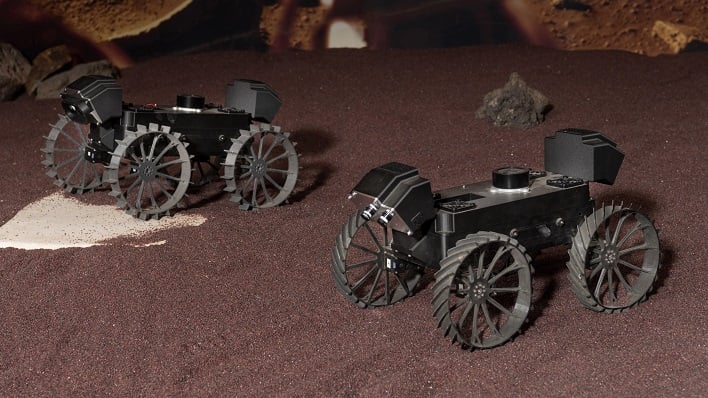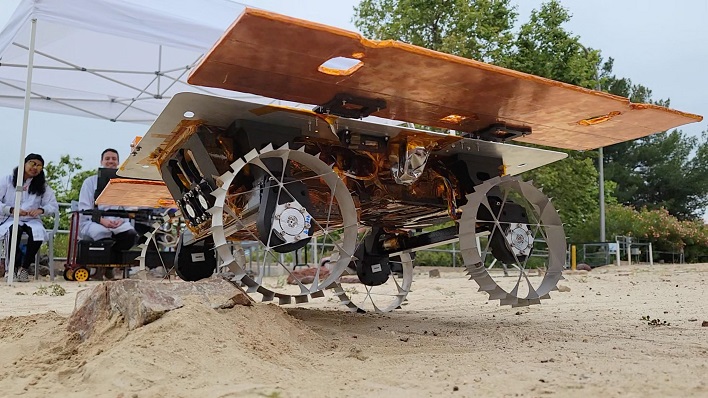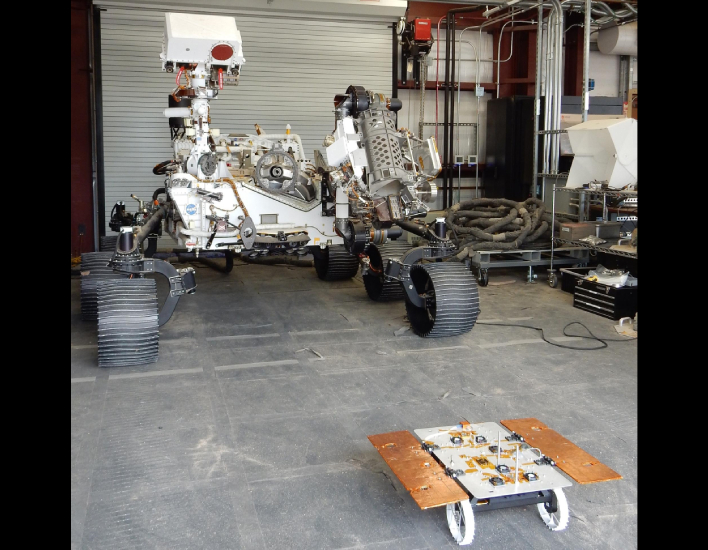NASA Readies A Pack Of Wild Rovers To Patrol The Moon’s Surface

As NASA moves closer to placing humans back on the surface of the moon for the first time since the Apollo 17 mission in 1972, the space agency is also preparing for a long-term presence on the lunar surface. There are quite a few projects in the works, such as ones testing out the best way to provide shelter and power for astronauts who will be spending long periods of time on the moon's surface. One of those projects, CADRE, consists of three rovers that will be powered by solar panels and operate autonomously.
"Our mission is to demonstrate that a network of mobile robots can cooperate to accomplish a task without human intervention - autonomously," remarked Subha Comandur, CADRE project manager at NASA's Jet Propulsion Laboratory in Southern California. "It could change how we do exploration in the future. The question for future missions will become: 'How many rovers do we send, and what will they do together?'"

"The only instruction is, for example, 'Go explore this region,' and the rovers figure out everything else: when they'll do the driving, what path they'll take, how they'll maneuver around local hazards," explained Jean-Pierre de la Croix, CADRE's principal investigator. "You only tell them the high-level goal, and they have to determine how to accomplish it."
The initial tests that will be performed by the rovers will include driving in formation and staying on course, assisted by ultra-wideband radios that will provide their relative position, along with sensors that help them to avoid obstacles. A second experiment will have the rovers venture out on a path of their own choosing in order to explore a designated area of approximately 4,300 square feet (400 square meters). While doing so, the rovers will create a topographic 3D map with stereo cameras.
While the test mission, which is scheduled to launch sometime in 2024, will not be focused on conducting science, the trio of rovers will have multistatic ground-penetrating radars onboard. This will allow the rovers, which are the size of a carry-on-suitcase, to create a 3D image of the structure of the subsurface as much as 33 feet (10 meters) below, according to a NASA press release.

If successful, CADRE could provide NASA with a means of completing missions that are potentially hard to access and/or dangerous, such as inside craters and caves on the Moon or Mars. By being able to work autonomously from one another, the group of small rovers will also be able to achieve the accuracy required to be utilized as a distributed instrument, "when data is collected by each individual rover and then combined to fulfill a common objective."
The three rovers are expected to arrive on the lunar surface as part of NASA's Commercial Lunar Payload Services (CLPS) initiative in 2024. They will be lowered down to the Reiner Gamma region of the Moon via tethers, and then will proceed to find an ideal location for recharging their solar-powered batteries. The trio is expected to spend about 14 Earth days conducting experiments that will test their capabilities.

